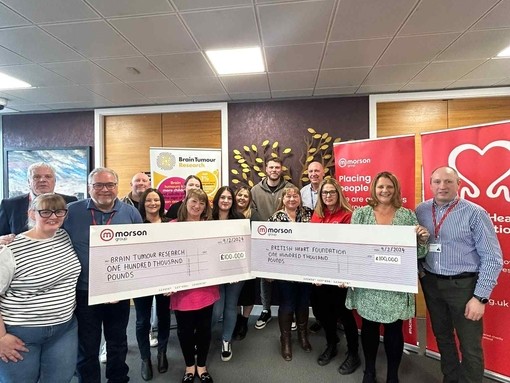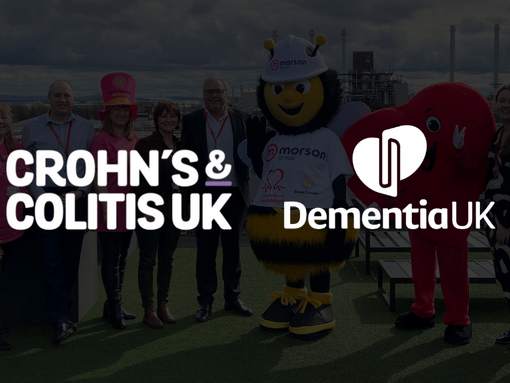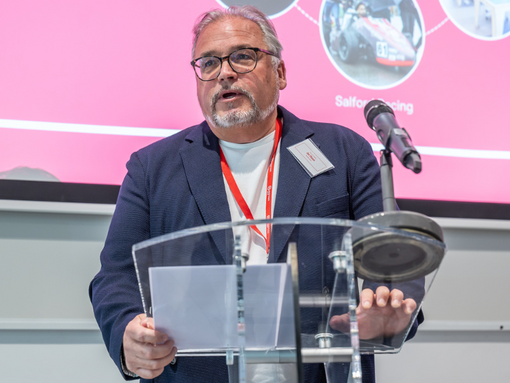
Future workspace design and the importance of interaction and collaboration: Adrian Campbell, The Senator Group
Contents
- Watch his interview here:
- What is workplace design?
- Talk to us about your career journey
- Talk to us about some of the projects you’ve worked on
- How has the workspace changed since the coronavirus pandemic?
- What are the limitations of remote working compared to working in an office?
- Do you think flexible working is here to stay?
Contents
In the aftermath of the coronavirus pandemic, working practices changed dramatically. With more and more people opting for hybrid working, splitting their time between home and the office, workspaces themselves have begun to physically change to encourage collaboration and more flexible ways of working.
Adrian Campbell is Workplace Design Consultant for The Senator Group, a family-owned global design business. They work with the world’s top designers to build a collection of collaborative office furniture designed around flexible workspaces. We spoke to Adrian about workplace design, his career and his inspiration. How important is office design in the workplaces of the future?
Watch his interview here:
What is workplace design?
In terms of workplace design, you’ve got two interesting factors. You’ve got a building that is all about hard surfaces. It’s all about engineering, it’s all about space. It’s a physical structure. And then you’ve got a company, which is an organisation, that’s living, that’s breathing, that has emotional connection to the spaces. So, it’s how you bring those two together, having an organisation and designing spaces that work within the technical constraints of the buildings that we’re given.
Talk to us about your career journey
While architects might design buildings, we would say that with workplace design, we make the buildings work. I was fortunate enough at school that I was able to draw, so I went off and did an arts degree in Leeds. It was very much that there was a summer job offered in one of the local manufacturing companies that happened to be about office design.
So, I was able to merge drawing skills with engineering, with manufacturing, and then that has just left me down a path where I’ve been involved in workplace design for the last 30-odd years. And I’ve only had three employers during that time. One was for a company where we were actually physically designing the space. One was for a company which is a bit more architectural led. And then for the last decade I’ve been working with the Senator Group, which is all about furnishing those spaces. So always in workplace design, but within the various design aspects which I like to think brings it all together the technical, the manufacturing and the paper side together.
Talk to us about some of the projects you’ve worked on
Well, it’s obviously been acres and acres of office space! The one that probably most people would be able to relate to is there’s an office building called King George in St George’s Park which is actually the home of English Football Association. And while I have very little interest in football, I ended up taking a brief from this chap called Gareth [Southgate] about how he wanted to redesign the building.
Four or five years ago we redesigned St George’s Park, which is where all of the England teams, male, female, are all based, into an environment that was about collaboration, that was about innovation, that was about the ability to speak up. And I’m not saying that the change in results is solely down to us, but surely it’s got to be a bit more than just a coincidence that we’ve redesigned the space that has reinvigorated where the result where the output of English football has come from!

So that’s probably the one that where we can say there’s a direct link, but everything from security bases to cruise ships, anywhere where we can start to think about how people interact within space is what we’re able to bring in and do for projects. And the point that I would say about COVID in the last two years in the pandemic is all of a sudden people are now talking about the workplace.
How has the workspace changed since the coronavirus pandemic?
Before, it was just a space that you went to work to prove that you were going to work. Now everyone’s debating what the workplace is from the Cabinet Office all the way down to every organisation. So, for me, that’s the key part. That’s the key fun bit now as it’s an open discussion that people want to have.
We love to give things labels. We love to say hybrid work. And why can’t we just say work? Because work has always gone on. And in terms of engagement, well, we’re human. So, the government did their best, sometimes with legal rules, over the last two years to push us apart, to keep us contained. But actually, we’ve done the exact opposite. We want to come together. So having spaces where people can come together, to have engagement with each other, to be with each other. That’s what people want.
The office is an opportunity for people during that work period that goes on to come together. And yes, we’ve given a label hybrid working, but let’s just call it work! We are incredibly fortunate that we’re face to face.
What are the limitations of remote working compared to working in an office?
You lose your sense of atmosphere. I’m getting a very limited message when I’m on the screen. The only thing that matters when people are communicating on the screens is their eyes. If you can’t have eye contact, then it doesn’t really work. You might as well sit there with a bag over your head because you’ve got no sense of any feedback whatsoever. The positives about digital communication are that it’s removed distance. It’s removed the time barrier so if I know somebody, if it’s an update meeting, if it’s an ongoing project, then it’s highly useful. But I want to sit in a space where I can control it. If it’s meeting somebody for the first time, if it’s being interactive, if it’s sharing, then it’s a secondary experience. It does not replace the face-to-face experience. So, like all these things, there’s a space for both of them within the working room. Digital has proved the value of face to face.
Where we used to just take face to face for granted, the fact that it was taken away from us for two years, we now actually value it and accept that if we’ve got to travel 3 hours to be here, to be face to face, that 3 hours is actually worth it for the experience that we have while we’re there.

Do you think flexible working is here to stay?
I think one of the things that happened throughout the pandemic is nobody quite saw how much people would like home working. We’re human, we’re healthier, we’re wealthier, we’re better, we have enjoyed the experience of home working, and I believe a large part of that is down to the environment that people are working in. For a lot of people, they have their own homes or they have a space that they make a home, and every single item in it they have chosen they have chosen the reason for the colour, the function, the height. There is not just a financial attachment. There’s an emotional attachment to everything that’s in the space around them, everything to where they position the phones, the chargers, and all of a sudden you’re asked to go and then work in this anaemic building that kind of looks like the place we all went for a vaccination.
And then we’re kind of all saying, well that doesn’t have to be. So for me, maybe the office can now be a bit more human. Can’t it be a bit more about that human attachment as to what we like to stimulate ourselves visually, creatively?
The workplace needs to learn from places like restaurants, where people come for not just the food for the atmosphere.
PathFinders is a Morson original series uncovering squiggly career journeys, unexpected opportunities, professional pivots, work/life challenges & successes, to showcase that there is no such thing as a ‘typical career path’. Click here to view our series
Contents
- Watch his interview here:
- What is workplace design?
- Talk to us about your career journey
- Talk to us about some of the projects you’ve worked on
- How has the workspace changed since the coronavirus pandemic?
- What are the limitations of remote working compared to working in an office?
- Do you think flexible working is here to stay?













